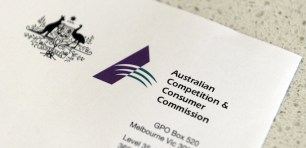
Source: Unsplash/Tyler Nix
Long before addressing environmental, social and governance (ESG) issues became a global movement, the concept of corporate social responsibility had begun to enter the lexicon of the board room.
An early example of this came from the coffee industry, which started to look critically in their own backyard in the late 1990s, after a not-so-gentle nudge from the likes of the World Bank.
The World Bank’s research shone a light on the environmental and social toll of the industry, highlighting issues including depletion of water sources and workers’ low wages and poor conditions.
Restaurants and cafes chose to support coffee beans deemed sustainable and promoted their support. It didn’t revolutionise the product, but it demonstrated a social conscience of businesses aligned with the change.
It was a shift in behaviour — in this case, essentially switching suppliers.
Consumer growth certainly wasn’t capped by the move. Today, there are almost 25,000 cafes in Australia, and in 2021 we as a nation consumed 1.91kg of coffee per person.
Cafes continue to innovate around the product they sell. Today, many encourage customers to bring their own cup by offering a discount — a discount that can be afforded by the trade-off to purchase fewer plastic-lined takeaway cups.
It’s ESG strategy that’s complementary to the business.
ESG commentary around metrics and what carbon footprints might look like in five or 10 years can easily overwhelm business leaders who are simply focused on running their company and negotiating the hurdles right in front of them.
Pitcher Partners’ recent Business Radar 2022 report indicated that more than half of all respondents are at least planning or thinking about ESG practices. But only 18% have acted, indicating that business leaders have concerns about taking action.
Of those who said they were reporting, only one in five are acting on environmental initiatives, with much higher take-up for social (47%) and governance initiatives (40%).
But when business behaviour is changed in ways that support and grow the business, such as responsible sourcing and cutting costs, then ESG doesn’t seem so daunting.
The key question for business leaders is: how can I be environmentally and socially responsible, with good governance, while achieving business goals?
Start with determining the appropriate weight of the E, the S and the G for your business and allow changes to be viable:
- Social factors are about the community — customers, reputation, or people;
- Environmental factors tap into cutting waste, improving efficiency and cost (financial and social) of resources; and
- Governance looks at controls and procedures, compliance and effective decision making.
Link ESG to a business metric and establish the why — is it staff retention, attracting new tenants, or reducing expenses?
Then look at how to capture, package and maintain that behaviour.
Look at the capital cost of installing solar panels and batteries, and how it compares to your current electricity provider. How quickly would the capital be repaid?
If you were planning to replace a vehicle fleet anyway, does the fuel savings down the line outweigh the potential higher capital cost at the start? If not electric, then perhaps hybrid or more fuel-efficient vehicles?
Landlords can do little to change how the government creates electricity, but they can ensure end-of-trip facilities are of good quality to encourage people out of their cars, use energy-saving smart light systems, or solar electricity if the building is suitable.
When putting the ESG plan into action, shout about it, whether it’s internally, in tender documents, job advertisements or social media.
But document and back up claims. The ACCC has listed ‘greenwashing’ as a priority for closer scrutiny to ensure follow through on environmental and sustainability promises.
Right now, ESG remains an opportunity if you own it and develop a plan to act, but it is a growing risk if ignored.
Potential employees can afford to be choosy in the current jobs market and they are already leaning to employers who demonstrate commitment to ESG.
City bus fleets are actively beginning the transition to battery electric and hydrogen-fuelled fleets. As that technology is proven it will not take customers long to demand their freighting suppliers do the same and will demand a plan from individual businesses to make their fleet green.
For businesses dealing with government, we are already seeing more requirements in tenders to define and communicate ESG strategies.
Lofty long-terms goals are important, but ESG is a journey, not an object. Like the behaviours being championed, business actions must be sustainable too.
Handpicked for you

The four critical drivers that make or break your business reputation



COMMENTS
SmartCompany is committed to hosting lively discussions. Help us keep the conversation useful, interesting and welcoming. We aim to publish comments quickly in the interest of promoting robust conversation, but we’re a small team and we deploy filters to protect against legal risk. Occasionally your comment may be held up while it is being reviewed, but we’re working as fast as we can to keep the conversation rolling.
The SmartCompany comment section is members-only content. Please subscribe to leave a comment.
The SmartCompany comment section is members-only content. Please login to leave a comment.